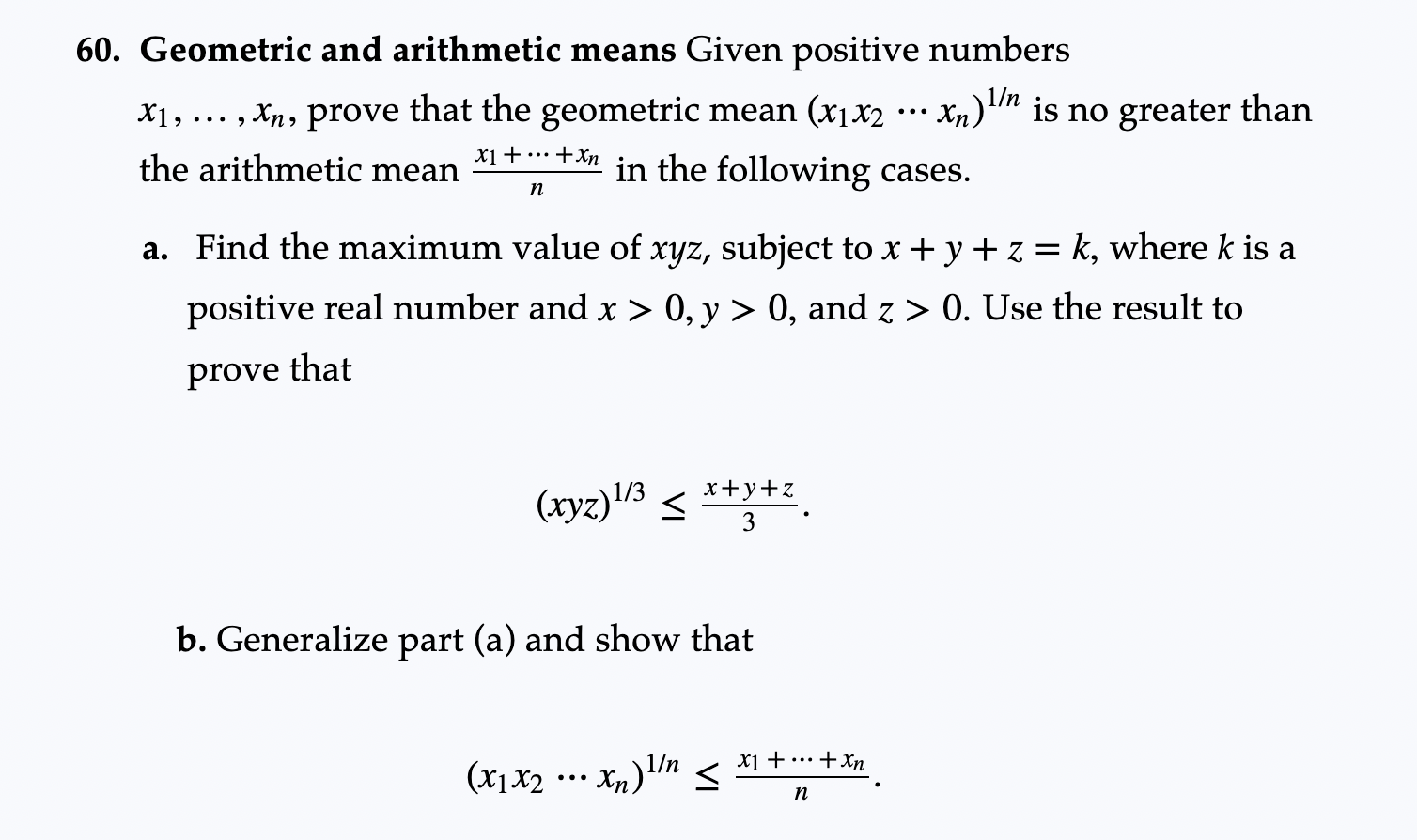Answered step by step
Verified Expert Solution
Question
1 Approved Answer
7-26. Lagrange multipliers Each function f has an absolute maximum value and absolute minimum value subject to the given constraint. Use Lagrange multipliers to




7-26. Lagrange multipliers Each function f has an absolute maximum value and absolute minimum value subject to the given constraint. Use Lagrange multipliers to find these values. 8. f(x, y) = xy subject to x + y = 1 48-51. Absolute maximum and minimum values Find the absolute maximum and minimum values of the following functions over the given regions R. Use Lagrange multipliers to check for extreme points on the boundary. 48. f(x, y) = x +4y + 1; R = {(x, y) : x+4y 1} 60. Geometric and arithmetic means Given positive numbers x1,...,xn, prove that the geometric mean (x1 x2 ... Xn) 1/n is no greater than in the following cases. the arithmetic mean x1+ . +xn n a. Find the maximum value of xyz, subject to x + y + z = k, where k is a positive real number and x > 0, y > 0, and z > 0. Use the result to prove that (xyz) 1/3 < x+y+z 3 b. Generalize part (a) and show that (x1x2 Xn)n ... x1+...+xn n
Step by Step Solution
There are 3 Steps involved in it
Step: 1

Get Instant Access to Expert-Tailored Solutions
See step-by-step solutions with expert insights and AI powered tools for academic success
Step: 2

Step: 3

Ace Your Homework with AI
Get the answers you need in no time with our AI-driven, step-by-step assistance
Get Started


